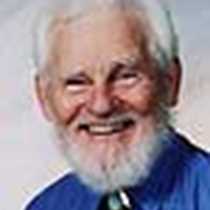Fort Clatsop National Monument, Astoria, Oregon
At this spot on March 23, 1806, Meriwether Lewis wrote in his journal, “We... distributed the baggage and directed the canoes to be launched and loaded for our departure. – at 1 P.M. we bid a final adieu to Fort Clatsop.” He seemed pleased to be leaving. On the same day William Clark wrote, “This morning proved So raney and uncertain that we were undeturmined for Some time whether we had best Set out & risque the [river?] which appeared to be riseing or not,” but “the rain Seased and it became fair about Meridean [mid-day].... we loaded our Canoes & at 1 P. M. left Fort Clatsop on our homeward bound journey.” He, too, was happy to leave.
We, too, had a rainy morning as the water dripping from this overhanging Sitka spruce bough suggests. Here at the expedition’s canoe landing on the Lewis and Clark (formerly the Netul) River, we saw the high tide that might have carried our big metal canoe up the Columbia had we not chosen to wait until later in the day – our choice since our vessel is driven by a powerful, modern mechanical engine. The mist that softens the banks and the treeline along the shore in this picture stayed with us all day. We left Fort Clatsop in the early afternoon, rounded Tongue Point (the expedition’s Point Williams) at dusk, and headed up river. The Corps made only 16 miles that first day heading home. We will make a hundred before dawn as we sail homeward.
For those who have followed in the footsteps and paddle strokes of Lewis and Clark, this voyage no doubt has many different meanings. They may have greater respect for what the members of the Corps of Discovery did every day for more than three years. They may have a deeper appreciation for the numerous encounters they had with indigenous people of the Great Plains, the northern Rockies, and the Columbia River Basin. Perhaps they understand better what the Corps of Discovery accomplished and how their “passage through the garden” affected native populations. We join with the Native peoples whose ancestors encountered the Expedition in commemorating the Bicentennial of the Lewis and Clark Expedition. Without the assistance of these great nations, the expedition would not have been a success.
At this spot on March 23, 1806, Meriwether Lewis wrote in his journal, “We... distributed the baggage and directed the canoes to be launched and loaded for our departure. – at 1 P.M. we bid a final adieu to Fort Clatsop.” He seemed pleased to be leaving. On the same day William Clark wrote, “This morning proved So raney and uncertain that we were undeturmined for Some time whether we had best Set out & risque the [river?] which appeared to be riseing or not,” but “the rain Seased and it became fair about Meridean [mid-day].... we loaded our Canoes & at 1 P. M. left Fort Clatsop on our homeward bound journey.” He, too, was happy to leave.
We, too, had a rainy morning as the water dripping from this overhanging Sitka spruce bough suggests. Here at the expedition’s canoe landing on the Lewis and Clark (formerly the Netul) River, we saw the high tide that might have carried our big metal canoe up the Columbia had we not chosen to wait until later in the day – our choice since our vessel is driven by a powerful, modern mechanical engine. The mist that softens the banks and the treeline along the shore in this picture stayed with us all day. We left Fort Clatsop in the early afternoon, rounded Tongue Point (the expedition’s Point Williams) at dusk, and headed up river. The Corps made only 16 miles that first day heading home. We will make a hundred before dawn as we sail homeward.
For those who have followed in the footsteps and paddle strokes of Lewis and Clark, this voyage no doubt has many different meanings. They may have greater respect for what the members of the Corps of Discovery did every day for more than three years. They may have a deeper appreciation for the numerous encounters they had with indigenous people of the Great Plains, the northern Rockies, and the Columbia River Basin. Perhaps they understand better what the Corps of Discovery accomplished and how their “passage through the garden” affected native populations. We join with the Native peoples whose ancestors encountered the Expedition in commemorating the Bicentennial of the Lewis and Clark Expedition. Without the assistance of these great nations, the expedition would not have been a success.




